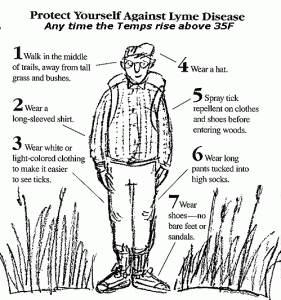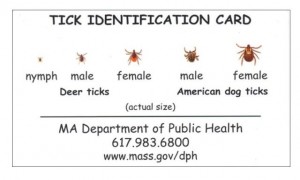Suggested Reading: “Reading the Forested Landscape” by Tom Wessels
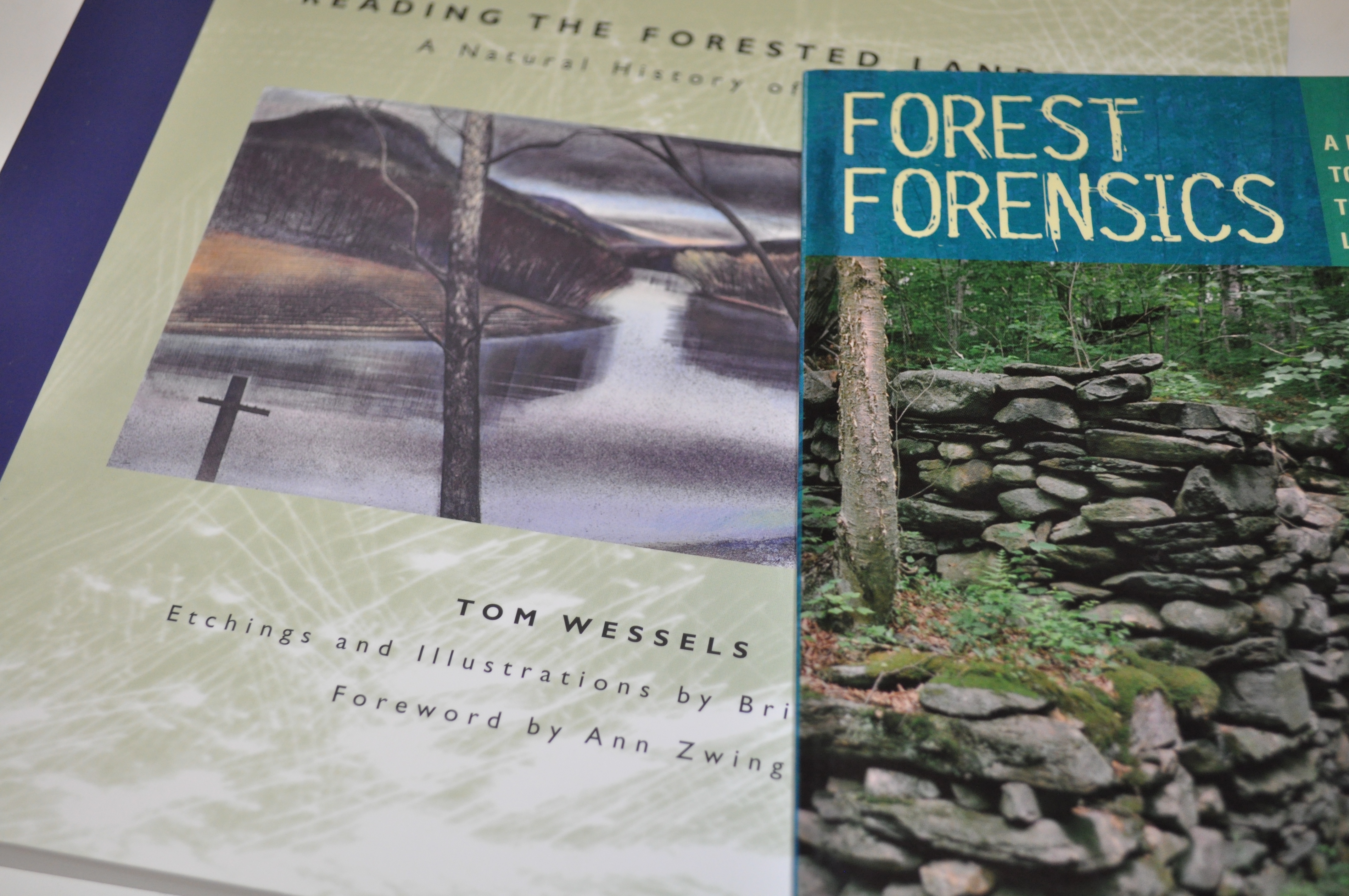
A couple of years ago while browsing in my local bookstore, Broadside Bookshop, I came across Reading the Forested Landscape by Antioch University New England faculty-member Tom Wessels. Intrigued by its concept, and always eager to add to my small library of natural history and ecology books, I picked up a copy.
What at first seemed liked just another nature-y book turned out to be so much more. Rather than take the more conventional and microcosmic approach of identifying a single tree, track, or species, Wessels seeks to understand the macrocosmic view of landscapes and ecosystems as a whole, and also through time.
Put another way, Tom Wessels tracks landscapes.
This book is a must have for any nature enthusiast, tracker, hiker or backpacker, birder, hunter, forester, etc. If you pick up a copy, it will almost certainly change the way you look at the woods and world around you forever.
And, if you’re interested in an introduction to tracking, or in honing your skills, check out our program The First Science: The Art of Animal Track and Sign.
It’s that special time of year…
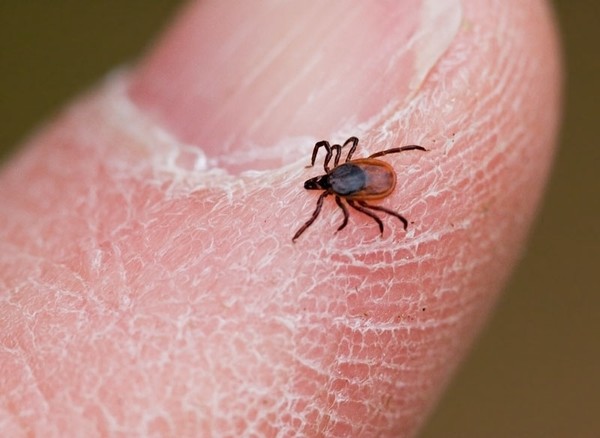
Despite the stormy weather today, spring has arrived, and along with the warm and sunny weather comes some less welcome members of the biotic community: ticks.
While I was up at Noble View in Russell, MA this last weekend with some AIAO staff and other outdoorsy types re-certifying in wilderness first aid, one of my fellow classmates found a tick on her arm. And, just like that, I went from blissful winter mode to vigilant tick-check mode.
You see, I was diagnosed with Lyme Disease a couple of years ago, and I can tell you from first hand experience that it’s no fun. And Lyme is not the only tick-borne illness to be concerned about; there are many others.
This is my reminder to you: it’s time to reinstate our regular warm weather precautions to prevent tick bites. Light colored clothing, long pants and shirt sleeves, tucking pants into long socks, using various bug repellants, avoiding tall grasses, and tick-checks are all good things to consider. But education trumps them all.
Check out the Centers for Disease Control and Prevention (CDC) tick information page
The University of Massachusetts also offers, for a fee, ttick-pathogentesting. You can visit their website for more information. You can also visit the CDC’s site for more information on the efficacy of these tests.
Gratuitous infographics:
U.K. Professor Sees Changes Coming to Expedition Industry

Many folks in the outdoor and environmental education fields can relate to Mark Hickman: “As a young man, I wanted to be the guy [professionally] climbing the mountains and running the river.” Of course, it’s not quite that easy, and we’ve all had to invest time, train, and pay our dues.
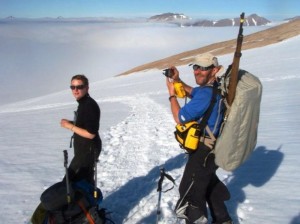
Hickman (right), in the field.
Starting off with the modest position of cook, Hickman worked his way through the ranks for over 30 years to become an instructor of adventure sports coaching and outdoor leadership skills at the University of Central Lancashire in the United Kingdom. And, his years of experience have led to some intriguing conclusions, particularly regarding the direction of outdoor education and expeditions:
“Following World War II, expeditions focused on a militaristic attitude of building the participants’ character — making them more resilient in the face of challenges. More recently, that has changed to a focus on personal development based around environmentalism, Hickman said. But he predicts a change in the next decade as the business focuses more on the outdoors as a resource for public health for an aging and more obese population, as well as for relief from increasing social isolation and depression.”
According to Hickman, “If we could change people’s perspectives and make a small impact on physical and mental health, it would be a reinvention of the outdoors.”
Many are witnessing shifts within outdoor education, in both people’s interests as well as the types of programs clients and participants are seeking. Hickman offers some food for thought, and I’ll be interested to see how the field evolves from here.
Visit the Billings Gazette for Brett French’s full article, and visit Adventure In, Adventure Out’s website for our full listing of adventure, expedition, and team-building programs.
What the Robin Knows
Our woods are waking up from their winter sleep, and birds are moving about in greater numbers, and even returning from warmer latitudes down south. As this happens, my ears are filled with the songs and conversations of these keenly observant creatures: what can I learn from them?
In this short video Jon Young introduces us to the concept of bird language, a form of auditory tracking and situational/landscape awareness.
A blue jay sounds an alarm several hundred yards away: the brush is thick, but now I know they’ve identified a threat.
Numerous birds are singing away: with no threats or territorial disputes to negotiate they let their guard down and chirp away. What sounds do you hear, and what are they telling you?
The Timber Doodle
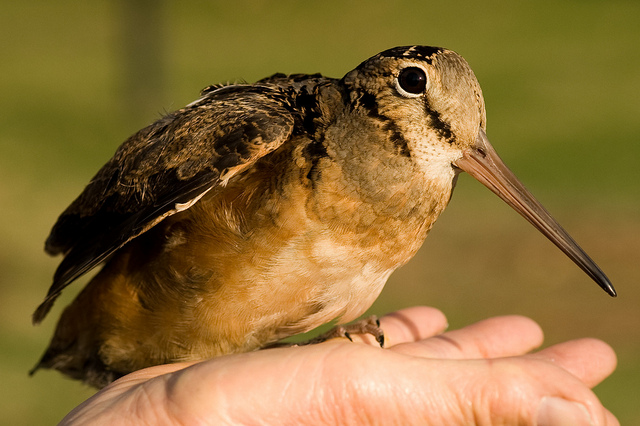
During today’s staff meeting, when James mentioned seeing a Timber Doodle, we all looked at him with looks of confused skepticism. “What the heck is a Timber Doodle?” I thought. A fan of playful jokes and pranks, we all thought that he must be putting us on. In fact, he wasn’t!
As it turns out, ‘Timber Doodle’ is just another name for the American Woodcock, the only woodcock to be found in North America. And, Timber Doodles are also signs of spring, for the male bird puts on a beautiful courtship “falling-leaf” flight display, signaling to us in the north that warmer weather is on its way.
Keep a watchful eye while in, or when passing by, open spaces and field for these small, stocky, beautifully patterned birds.
For more information, visit the Wildlife Management Institute‘s site, Timberdoodle.org And, visit our website for more information on Adventure In, Adventure Out’s tracking course, The First Science: The Art of Animal Track and Sign.
Have Experts Confirmed Mountain Lion in Winchester MA?
Not even 10 miles outside of Boston, Winchester, MA has become the latest town to experience the drama that often surrounds mountain lions in the Northeast.
While the last official sighting in Massachusetts of one of these big cats took place in the 19th century, New England residents have been seeing mountain lions, as well as their tracks and scat, for many years. But, the crux of many arguments doesn’t revolve around just their presence, but also whether or not there is a breeding population present in our woods. The general consensus seems to be: we are seeing mountain lions, but they have traveled here from other locations. In fact, the cat that was struck and killed on a Connecticut highway just under three years ago is supposed to have traveled from South Dakota based on genetic data.
Regardless, national mountain lion experts have weighed in on the current discovery of mountain lion sign in Winchester, analyzing the photographic evidence, and have concluded that there is a big cat in the area. However, state officials and local academics disagree with the assessment saying that the tracks found are most likely from another animal.
This recent New York Times article contains some helpful information about the current state of mountain lions, and this article tells us more about the situation in Winchester.
Dave Hayes the Weather Nut

If you’re a resident of the Connecticut River Valley, or Western Mass in general, you’ve most likely heard of Dave Hayes. But for those who haven’t…
Bob Dylan sang, “You don’t need a weatherman to know which way the wind blows,” and while that may be true, no matter the season, it can be really handy to have the most accurate weather forecast. How many times have you made travel, vacation, or day plans only to have them stymied by unexpected weather?
Enter Dave Hayes. An amateur meteorologist with a growing following, Hayes goes by the name “The Weather Nut,” and for good reason: he’s obsessed with meteorology! So much so that he pours over forecasts and reports from numerous sources to create the most accurate weather forecasts you’ll find for the area. He’s not perfect (is there such a thing as a perfect meteorologist?), but he’s the closest you’ll find to it, and his forecasts for weather onset, duration, precipitation amounts, etc. are almost always spot on.
He posts regularly, and you can ‘like’ his Facebook page here.
If you’re interested in learning more about him, you can check out this Gazettenet article as well.
Don’t worry, folks: spring is coming!
(Another Reason) Why You Should Brake for Possums

Unfortunately, Lyme Disease and other tick-borne illnesses have become commonplace in the Northeast. Speaking from personal experience, they’re no fun, which is why this article grabbed my attention. Aside from being another example of the connections that sometimes exist in nature without our knowing, it provides interesting information on how possums, who’s movements will increase as we say ‘Goodbye’ to winter, can lower tick population numbers.
For the full article and accompanying WAMC podcast, visit the Cary Institute of Ecosystem Studies.
And for more information on Adventure In, Adventure Out’s tracking and adventure programs, please visit our website.
Richard Louv on Education and Nature Deficit Disorder
In this clip from Mother Nature’s Child, journalist and author Richard Louv discusses the negative effects of modern education and its impact on both students and teachers. Referencing the numerous recent studies on children and exposure to nature, Louv jokes that “if you want your kids to get into Harvard, tell them to go outside.” He also asserts that “when we take nature away from people, we take away their ability to be full human beings.”
Today’s lesson, no matter your age: Go outside and play!
 Adventure In Adventure Out
Adventure In Adventure Out
